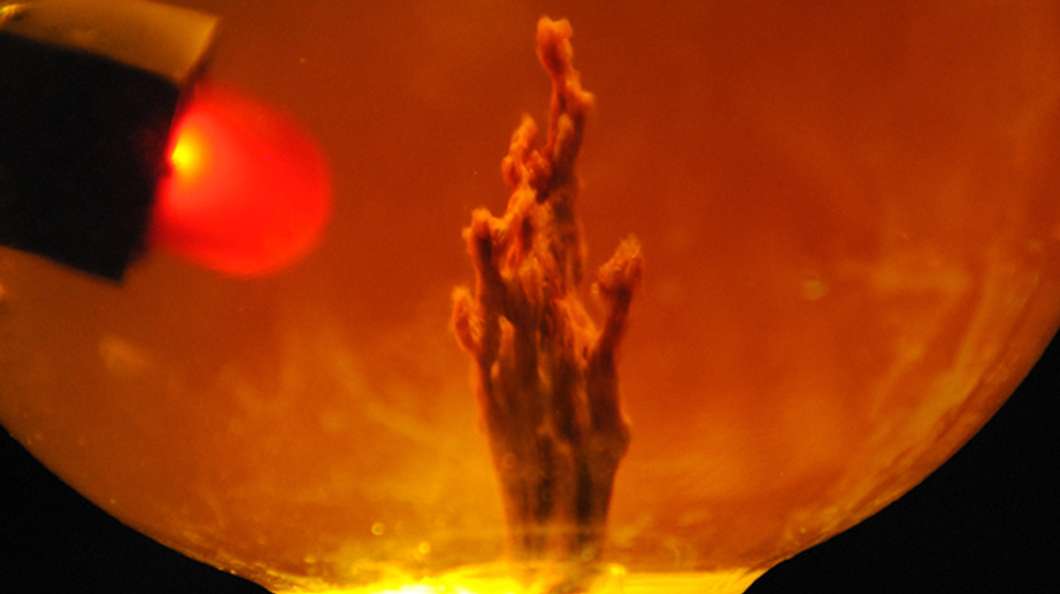
One popular theory as to how life took root on Earth, called the alkaline vent hypothesis, supposes that life came into being underwater aided by warm, alkaline chimneys. Ranging in size from a few inches to tens of feet, these chimneys form naturally at bubbling hypothermal vents on the seafloor.
It’s possible that, when the Earth was still young, chimneys like these generated electrical and proton gradients across the mineral membranes that distinguish their compartments. These gradients emulate vital life processes to generate energy which could have been used by early organisms. The chimney’s special ability to transfer electrical currents is key to the whole process.
"These chimneys can act like electrical wires on the seafloor," says Laurie Barge of NASA's Jet Propulsion Laboratory, Pasadena, California, lead author of the study. "We're harnessing energy as the first life on Earth might have."
The research team's findings indicate that life on early Earth may have got an electrical boost from structures like these.
"Life doesn't want to get electrocuted, but needs just the right amount of electricity," says Michael Russell of JPL, a co-author of the study. "This new experiment confirms what that amount of electricity is – just under a volt."
The team created the chimneys with geological materials capable of conducting electrons, like iron sulphide and iron hydroxide. When they immersed these structures in iron-containing fluids and connected four of them together. After months of refinement, they got enough electricity to power an LED light bulb.
Future plans include conducting experiments with materials that might have been present in Earth’s hydrothermal vents and early oceans, such as nickel, hydrogen, molybdenum and carbon dioxide, to assess their electrical potential.
Figuring out the right combination will enable them to create a chimney that might be capable of powering a light all by itself. Ultimately the researchers aim to help piece together the story of the origins of life on Earth. The team also suggests that testing of materials potentially involved in the development of life on other planets and moons, like Mars or Jupiter’s Moon Europa, is also possible.

 Previous page
Previous page Back to top
Back to top







